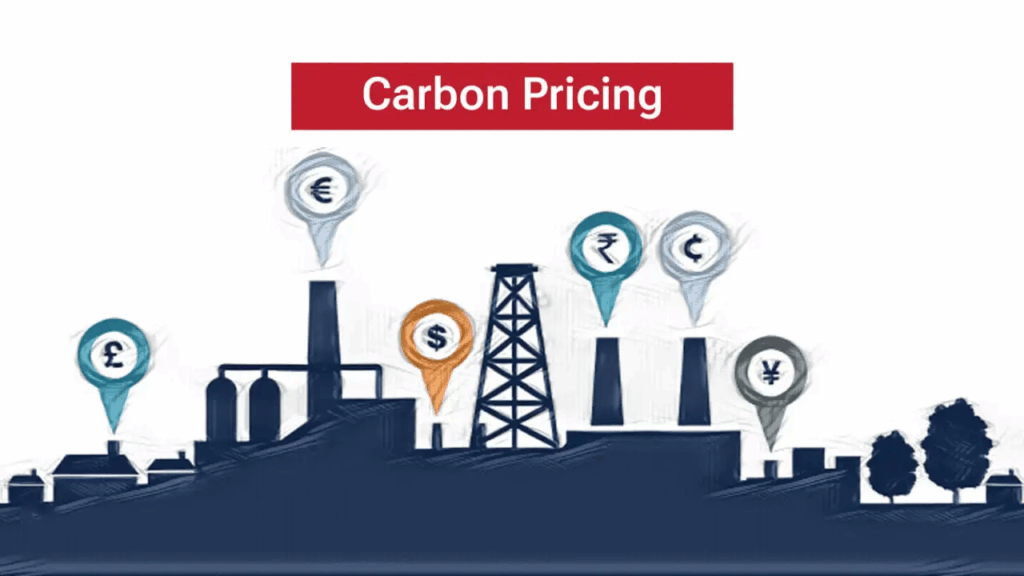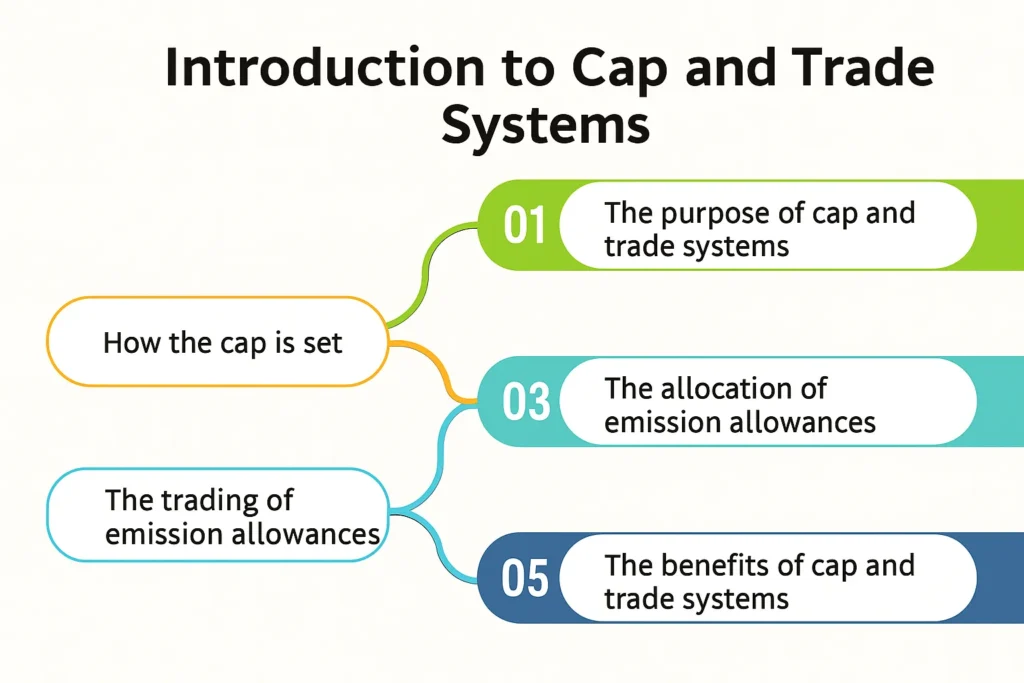Ever feel like understanding climate change policies is like trying to decipher ancient hieroglyphics? You’re not alone. Many find the world of environmental economics complex and intimidating, especially when terms like carbon pricing mechanisms get thrown around.
But what if we could simplify it? This article breaks down the complexities of carbon pricing, making it easier to understand how these mechanisms work and why they’re important. Let’s dive in!
What are Carbon Pricing Mechanisms?
Carbon pricing mechanisms are essentially policies that put a price on carbon emissions. This price incentivizes businesses and individuals to reduce their greenhouse gas emissions by making them pay for the environmental impact of their carbon footprint. Think of it as making polluters accountable for the costs their emissions impose on society.
The goal is to shift the burden of climate change from society as a whole to those who are responsible for the emissions. This encourages cleaner energy sources, more efficient processes, and ultimately, a more sustainable future.
Why Implement Carbon Pricing?
Why go through all the trouble of implementing carbon pricing? Well, there are several compelling reasons.

- Reduces Emissions: By making emissions costly, businesses and individuals are motivated to find ways to reduce their carbon footprint.
- Encourages Innovation: Carbon pricing drives innovation in clean technologies and energy efficiency. Companies are incentivized to develop and adopt greener solutions.
- Generates Revenue: The revenue generated from carbon pricing can be reinvested in green initiatives, infrastructure projects, or used to reduce other taxes.
- Levels the Playing Field: It creates a level playing field for businesses by ensuring that the environmental costs of carbon emissions are factored into their operations.
Types of Carbon Pricing Mechanisms
There are two primary types of carbon pricing mechanisms: carbon taxes and cap-and-trade systems. Let’s explore each in detail.
Carbon Tax
A carbon tax is a straightforward approach. It’s a fee levied on the carbon content of fossil fuels. This tax increases the cost of activities that generate carbon emissions, such as burning coal or driving gasoline-powered vehicles.
How Carbon Tax Works
The carbon tax is typically applied at the point where fossil fuels enter the economy – for example, at the mine, well, or port. The tax is then passed on through the supply chain to consumers, who ultimately pay a higher price for carbon-intensive goods and services.
Advantages of Carbon Tax
- Simplicity: Carbon taxes are relatively simple to implement and understand.
- Predictability: They provide businesses with a clear and predictable price signal, allowing them to plan for the future.
- Revenue Generation: Carbon taxes can generate significant revenue for governments.
Disadvantages of Carbon Tax
- Political Opposition: Carbon taxes can face strong political opposition due to concerns about increased costs for consumers and businesses.
- Regressive Impact: They can disproportionately affect low-income households, who may spend a larger portion of their income on energy.
- Competitiveness Concerns: Businesses may worry about losing competitiveness if they are subject to a carbon tax while their competitors in other regions are not.
Cap-and-Trade System (Emissions Trading System – ETS)

A cap-and-trade system, also known as an emissions trading system (ETS), sets a limit, or “cap,” on the total amount of greenhouse gases that can be emitted by a group of industries or entities. This cap is gradually reduced over time, driving down overall emissions.
How Cap-and-Trade Works
Under a cap-and-trade system, emission allowances (permits to emit a certain amount of greenhouse gases) are created, and these allowances are either allocated to companies for free or auctioned off. Companies that reduce their emissions below their allowance level can sell their excess allowances to companies that exceed their limits. This creates a market for carbon emissions, where the price of allowances fluctuates based on supply and demand.
Advantages of Cap-and-Trade
- Emissions Certainty: Cap-and-trade provides certainty that emissions will be reduced to the level of the cap.
- Flexibility: It allows companies to choose the most cost-effective way to reduce their emissions.
- Market-Driven: The market mechanism encourages innovation and efficiency in emissions reduction.
Disadvantages of Cap-and-Trade
- Complexity: Cap-and-trade systems can be complex to design and implement.
- Price Volatility: The price of emission allowances can be volatile, making it difficult for businesses to plan.
- Risk of Carbon Leakage: There is a risk that companies may move their operations to regions without carbon pricing, leading to “carbon leakage.”
Real-World Examples of Carbon Pricing
Several countries and regions around the world have implemented carbon pricing mechanisms. Let’s look at a few notable examples.
European Union Emissions Trading System (EU ETS)
The EU ETS is the world’s largest carbon market, covering approximately 40% of the EU’s greenhouse gas emissions. It includes power plants, industrial facilities, and airlines.
Successes of EU ETS
- Significant Emissions Reductions: The EU ETS has contributed to significant reductions in greenhouse gas emissions in the EU.
- Innovation in Clean Technologies: It has driven innovation and investment in clean technologies.
Challenges of EU ETS
- Price Volatility: The price of emission allowances has been volatile at times, leading to uncertainty for businesses.
- Oversupply of Allowances: In the early years of the EU ETS, an oversupply of allowances led to low prices and reduced effectiveness.
Canada’s Carbon Pricing System
Canada has implemented a national carbon pricing system, which includes both a carbon tax and a cap-and-trade system. Provinces and territories can choose to implement their own carbon pricing systems, provided they meet certain federal standards.
Strengths of Canada’s System
- Flexibility: The system allows provinces and territories to choose the carbon pricing approach that best suits their needs.
- Revenue Recycling: The revenue generated from the federal carbon tax is returned to households in the form of rebates.
Weaknesses of Canada’s System
- Political Opposition: The carbon pricing system has faced significant political opposition in some provinces.
- Variations Across Provinces: The variations in carbon pricing systems across provinces can create complexity and potential for carbon leakage.
California’s Cap-and-Trade Program
California has a cap-and-trade program that covers a wide range of industries, including electricity generation, industrial facilities, and transportation fuels.
Benefits of California’s Program
- Emissions Reductions: The program has contributed to significant reductions in greenhouse gas emissions in California.
- Investment in Clean Energy: The revenue generated from the program has been invested in clean energy projects and other environmental initiatives.
Limitations of California’s Program
- Linkage Challenges: Linking California’s program with other jurisdictions has faced challenges.
- Price Volatility: The price of emission allowances has experienced some volatility.
Challenges and Criticisms of Carbon Pricing
While carbon pricing offers numerous benefits, it also faces challenges and criticisms.
Political Opposition
One of the biggest challenges is political opposition, often fueled by concerns about the economic impact of carbon pricing. Some argue that it will raise costs for consumers and businesses, leading to job losses and reduced competitiveness.
Regressive Impacts
Carbon pricing can have regressive impacts, disproportionately affecting low-income households. This is because low-income households typically spend a larger portion of their income on energy, and higher energy prices can strain their budgets.
Carbon Leakage
Carbon leakage occurs when businesses move their operations to regions without carbon pricing to avoid paying the carbon price. This can undermine the effectiveness of carbon pricing and lead to emissions increases in other regions.
Complexity and Administrative Costs
Designing and implementing carbon pricing systems can be complex and require significant administrative resources. This can be a barrier to adoption, particularly for smaller countries or regions.
Designing Effective Carbon Pricing Mechanisms
To overcome these challenges and ensure the effectiveness of carbon pricing, it’s essential to design mechanisms carefully.
Broad Coverage
Carbon pricing should cover a broad range of emissions sources to maximize its impact. The more sectors and activities that are subject to the carbon price, the greater the potential for emissions reductions.
Stringent Targets
The targets for emissions reductions should be ambitious enough to drive meaningful change. This requires setting a carbon price that is high enough to incentivize businesses and individuals to reduce their emissions.
Revenue Recycling
The revenue generated from carbon pricing should be used in ways that benefit society, such as investing in green infrastructure, providing rebates to low-income households, or reducing other taxes.
Border Adjustments
Border adjustments can help to address concerns about carbon leakage by leveling the playing field for businesses that are subject to carbon pricing. This involves imposing tariffs on imports from countries without carbon pricing and providing rebates to exporters.
International Cooperation
International cooperation is essential to ensure the effectiveness of carbon pricing. This includes harmonizing carbon pricing policies across countries and establishing mechanisms for international emissions trading.
The Future of Carbon Pricing
The future of carbon pricing looks promising, with growing momentum for its adoption around the world. As countries and regions increasingly recognize the need to address climate change, carbon pricing is likely to play an increasingly important role in their climate policies.
Expanding Coverage
We can expect to see carbon pricing expand to cover more sectors and regions in the coming years. This will help to drive down emissions across a wider range of activities.
Increasing Ambition
The ambition of carbon pricing targets is likely to increase as countries and regions strive to meet their climate goals. This will require setting higher carbon prices and implementing more stringent emissions reduction policies.
Technological Advancements
Technological advancements will play a key role in the future of carbon pricing. New technologies, such as carbon capture and storage, can help to reduce emissions from hard-to-abate sectors.
Integration with Other Policies
Carbon pricing will need to be integrated with other climate policies, such as renewable energy standards and energy efficiency programs, to achieve the deep emissions reductions needed to address climate change.
Conclusion
Carbon pricing mechanisms simplified offer a powerful tool for tackling climate change. Whether it’s through a carbon tax or a cap-and-trade system, the principle remains the same: making polluters pay for their emissions. While challenges exist, the benefits of reducing emissions, encouraging innovation, and generating revenue are undeniable.
What are your thoughts on carbon pricing? Have you seen its impact in your community or industry? Share your experiences and join the conversation!
FAQ Section
Here are some frequently asked questions about carbon pricing mechanisms.
Q: What is the difference between a carbon tax and a cap-and-trade system?
A: A carbon tax is a direct fee on carbon emissions, while a cap-and-trade system sets a limit on total emissions and allows companies to trade emission allowances. The carbon tax provides a predictable price signal, while the cap-and-trade system provides certainty about emissions levels.
Q: How does carbon pricing affect consumers?
A: Carbon pricing can increase the cost of goods and services that are carbon-intensive, such as gasoline and electricity. However, the revenue generated from carbon pricing can be used to provide rebates to consumers or to invest in programs that benefit them.
Q: Is carbon pricing effective in reducing emissions?
A: Yes, studies have shown that carbon pricing can be effective in reducing emissions. By making emissions costly, it incentivizes businesses and individuals to find ways to reduce their carbon footprint.

